A couple handsome colts had been foaled to the Embers band. Since his years as a young bachelor, Embers had been a favorite of ours and Tom's. His dark bay coat was specked with white like a soft dusting of new snow and his mane and tail flowed long and black as a raven's wing. He was a well built stallion, who had impressed us with his proud stature and protective nature. His colts, one from a pretty red roan mare and one from the mare Tom called the "dirty brown mare," were both bay roans but lighter than their sire.
That summer I worked meticulously getting photos of all the bands and individual horses so that I would know who was who when they were driven from the breaks and valleys further out in the Park into the handling facility by the helicopter. Tom customarily rode in the helicopter to guide the pilot in herding the horses, while Henry and I waited at the handling facility to identify the horses as they were moved though the facility, into the chute, and into the keeper or cull pens. It was determined that about two-thirds of the foals would be sold at auction after the roundup, but I had not even thought about the possibility of bringing any home.
After a successful roundup Henry and I looked over the horses that had been captured, remarking about how cute some of the foals were. Later that evening, Henry asked what I thought of buying one of the foals; he apparently had been contemplating the idea over the summer. I was a little surprised, but knew that he would be needing a good trail horse, so we looked at what was available on the cull list. There were some extremely cute foals from the Interstate band, but I didn't think they would get big enough for Henry, so I suggested seeing what Embers had.
We discovered that he had the two colts in the sale, so Henry decided to pick one of them. By the time we got to the sales barn in Dickinson, that sale had already started. The first colt came in with his face cut up. Since the colts were wild, it would be pretty hard to get him stitched up, so Henry waited for the next one. Before very long the colt from the "dirty brown mare" came into the sales ring. He was big and strong and, though frightened and confused from all the sights and sounds of a sale barn, he seemed to handle the stress without panic. We hadn't even had time to take a good look at him, but he looked pretty correct from where we sat, so Henry bought him. He named the the pretty bald faced bay roan colt Embers' Fire after his sire.
The first obstacle was to get him safely loaded in our trailer without injury. Since we still had our saddle horses with us, Henry just moved them both to the front or the four-horse, leaving the back section open. While Henry was getting the trailer ready and backed up in the loading area, I visited the colt in his pen, getting him used to me and familiar with the principles of pressure and release. Rather that letting the sale barn hands chase him, I carefully pressured him enough to get him moving and then backed off. He walked right into the trailer.
The first several days, we had to keep Fire in the barn because we hadn't been prepared for a wild horse and didn't have a pen with high enough fences. We soon found out that the pens in the barn were also not sufficient to contain a wild foal. Though he seemed to be depressed from the traumatic experience of being chased by a helicopter, separated from his family, and brought to a completely strange environment, he would not tolerate being left alone. My old Quarterhorse, Badlands, had to become his constant companion and Henry had to reinforce the pen so that he could not destroy it trying to get out when Badlands went for a drink of water. Except for not wanting to be left alone, Fire was quite calm and easy to gentle. From the very beginning of being in the trailer we could pet him , so getting him halter broken was not a problem. He didn't much like the farrier, but with some patience he soon accepted whatever handling he needed
In his second year Fire went for his first schooling. Though he was very calm, Fire tended to meet each new challenge with irritation and a fight responce rather than acceptance. His new teachers, Russel and two gargantuan draft horses, taught Fire about submission. He soon learned that fighting a new and somewhat frightening situation was fruitless and started to think that what this persitent man and his team wanted from him was not that difficult. While he was in training Henry and I would go for visits to learn how to harness and drive him safely. After a couple months, we were able to drive him around the back roads of that rural North Dakota community and soon brought him home.
The following year Fire went to Zachery for training under saddle. Again he proved to have a strong will, but when handled with a firm, yet patient, kind approach, he accepted his new job without any rodeo tricks. Since Zachary was a champion saddle bronc rider, he would have been able to handle anything Fire could have given him, but Zachery is a believer in making the right thing easy and the wrong thing difficult, so that the young horse figures out what is expected of him before getting too frustrated and turning off his brain. Fire was soon making his turns and transitions like a pro. Both Russell and Zachery had enjoyed working with the once wild colt and Henry was excited to ride Fire back in his natal prairie and breaks.
The opportunity came that fall. Fire easily handled the terrain he had been born in and, unlike most domestic horses we have taken to the badlands for the first time, he was never nervous about gully crossings or the occasional Bison bull lurking around the sunny side of a butte. Another characteristic that separated Fire from other horses was that he would not pass up any opportunity to drink. Even the rain filled tracks of Bison and other horses were good sources of drinking water; his mama had taught him well to get his drinks when he could, not knowing when the next chance might be. To this day Fire has proved himself to be a strong, sensible saddle horse and, at 15.2 and around 1200 pounds, quite a striking boy.


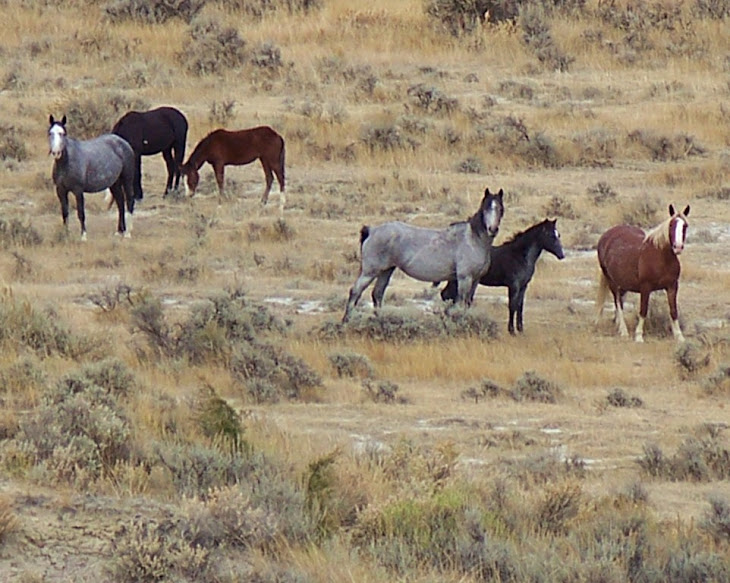
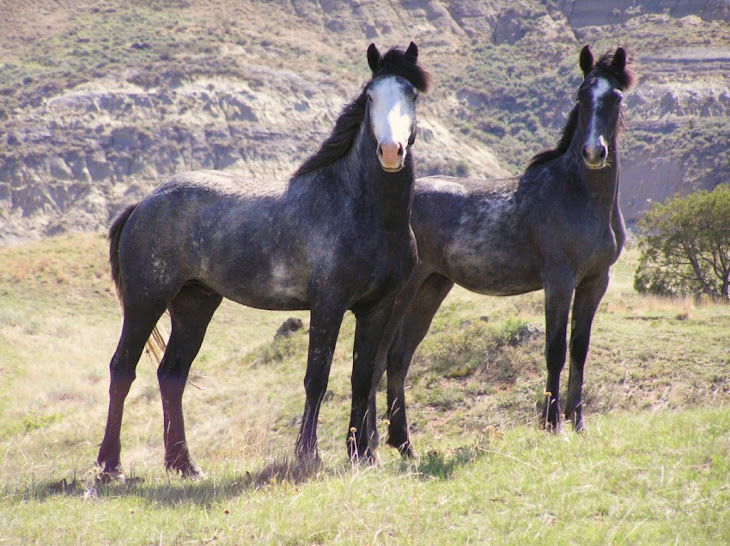









































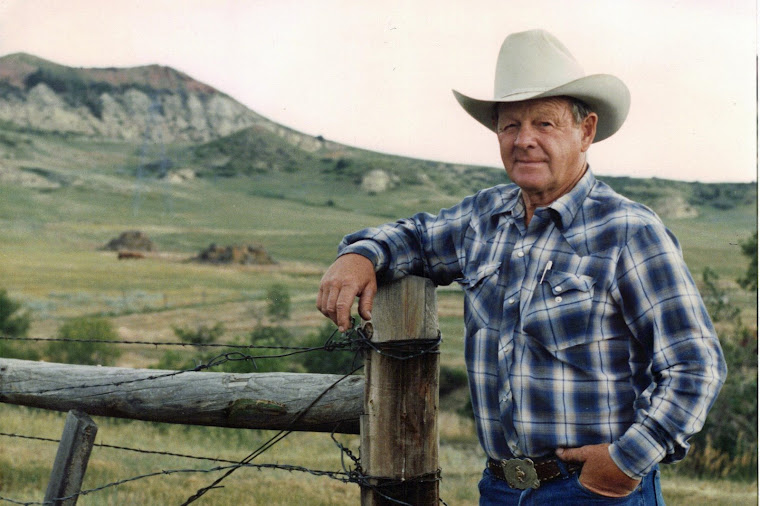
























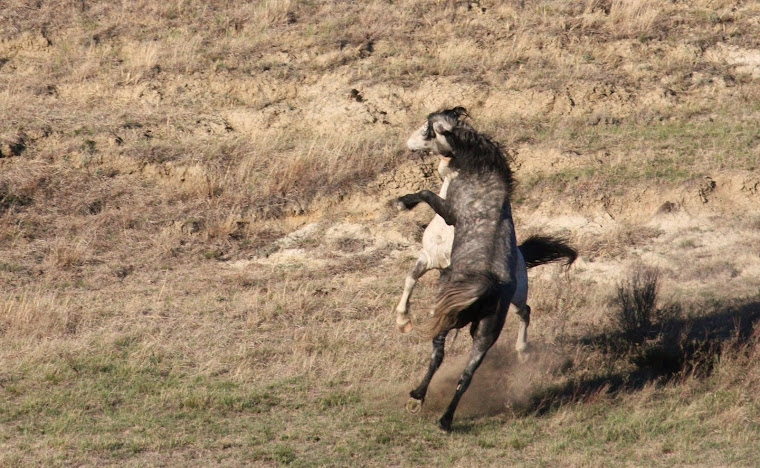













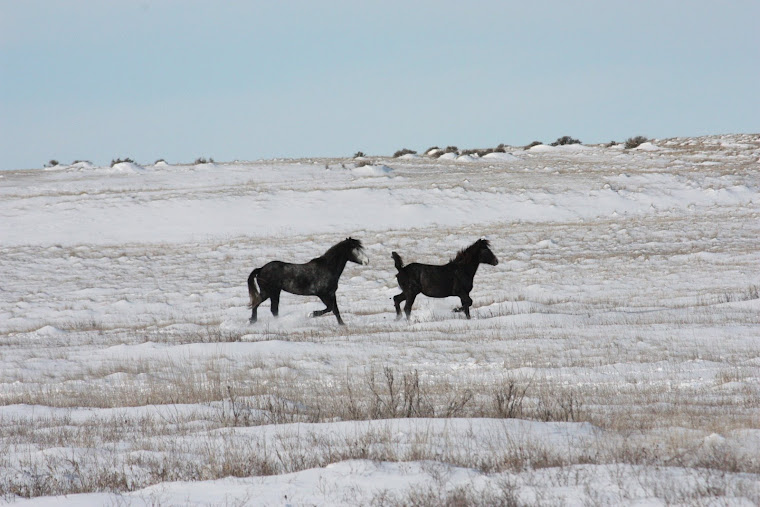
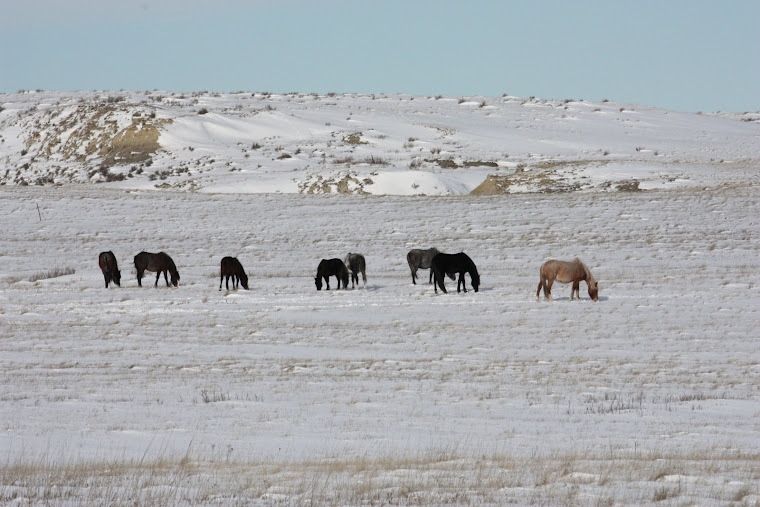
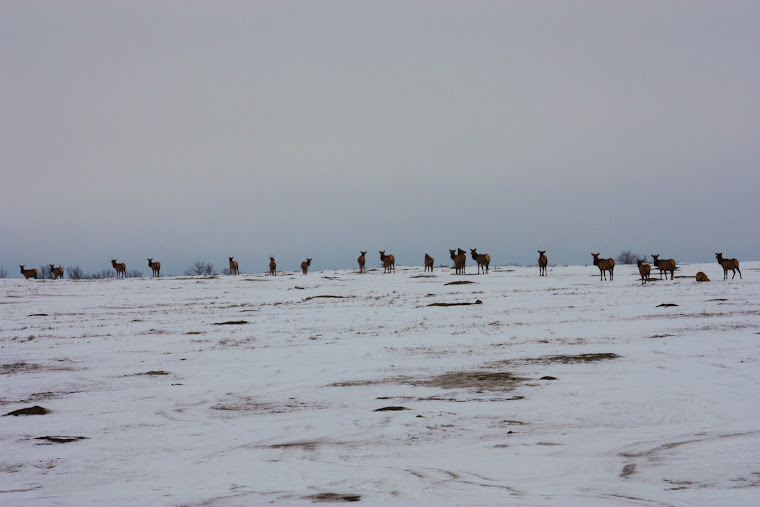
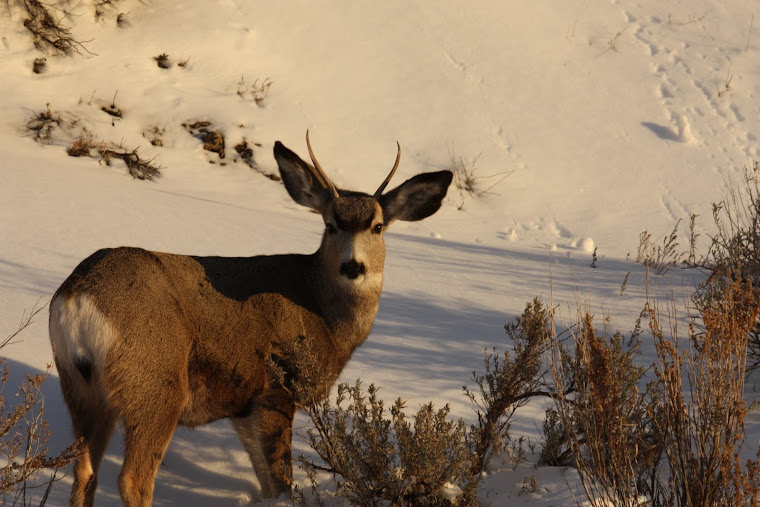




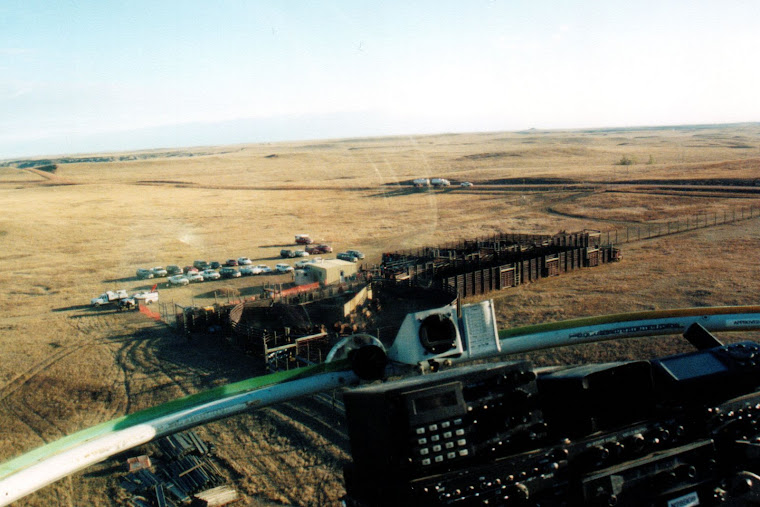
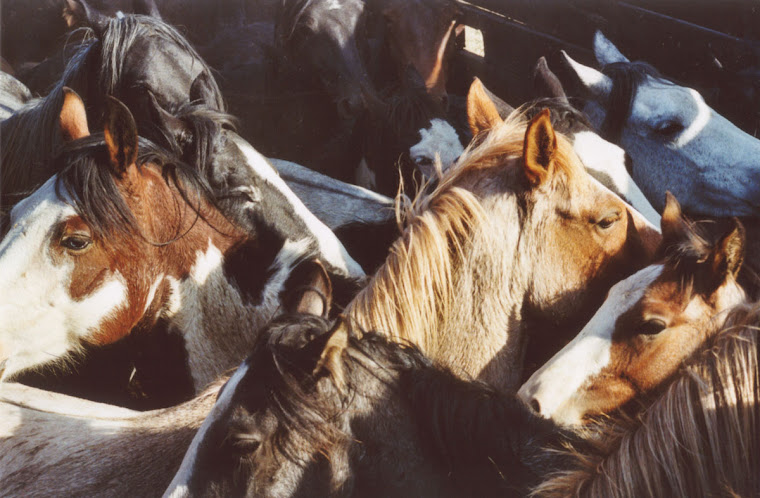
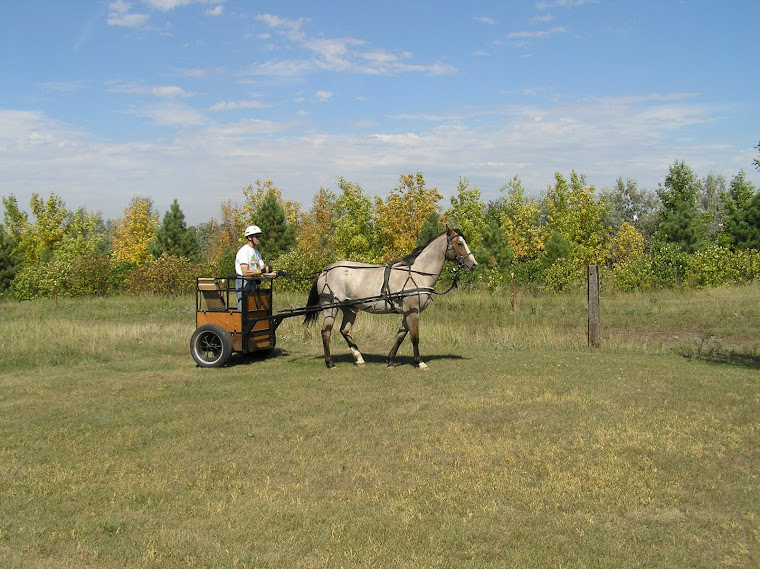
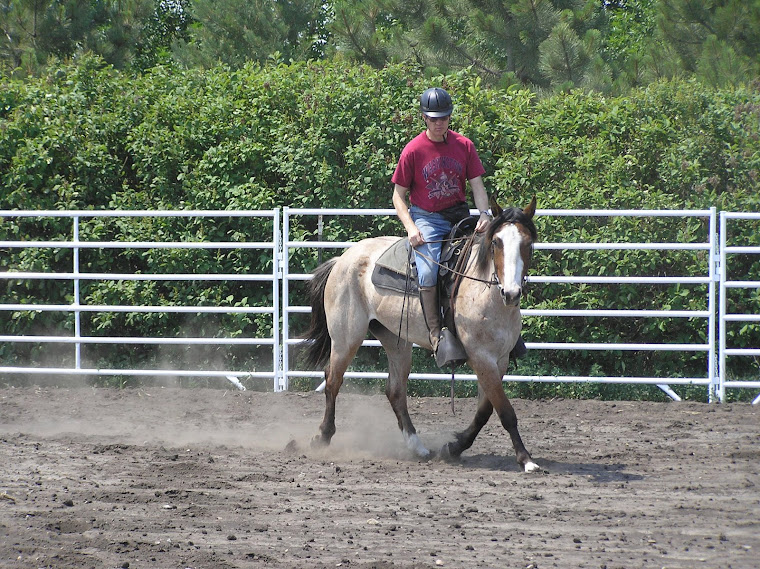

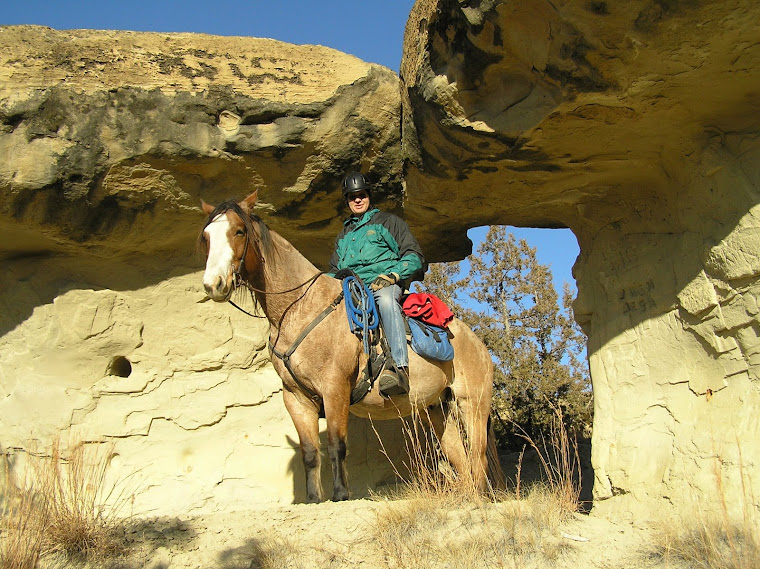



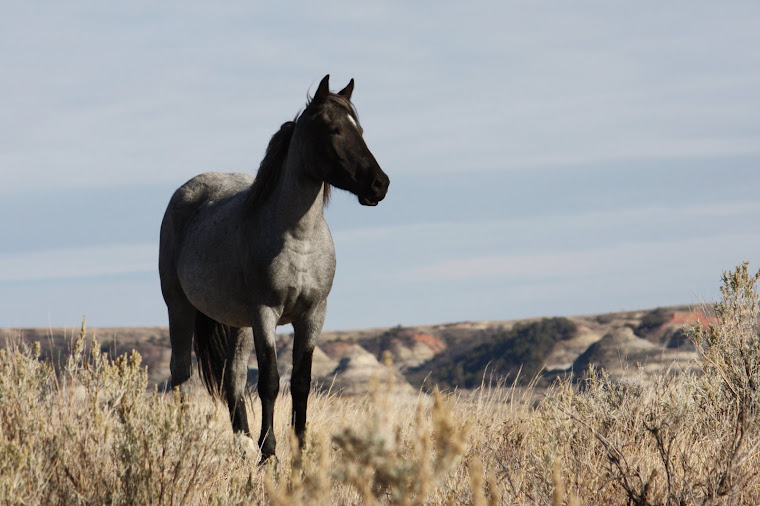


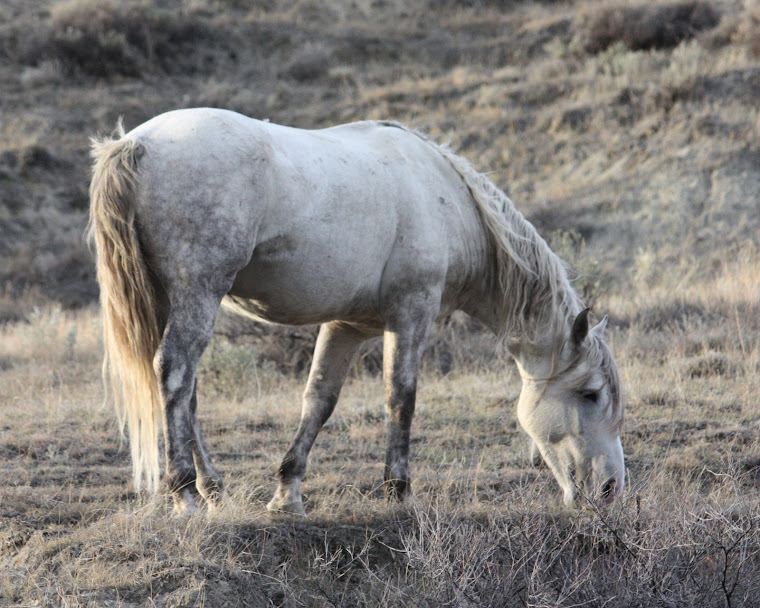
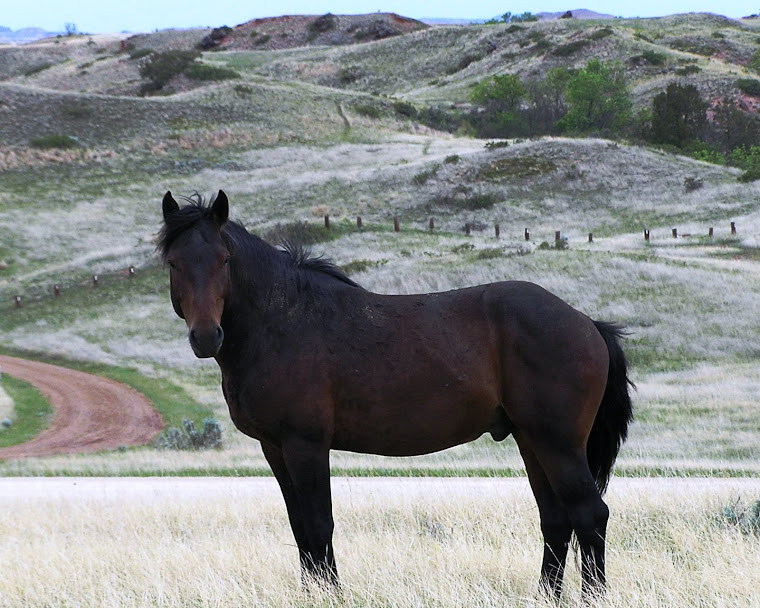

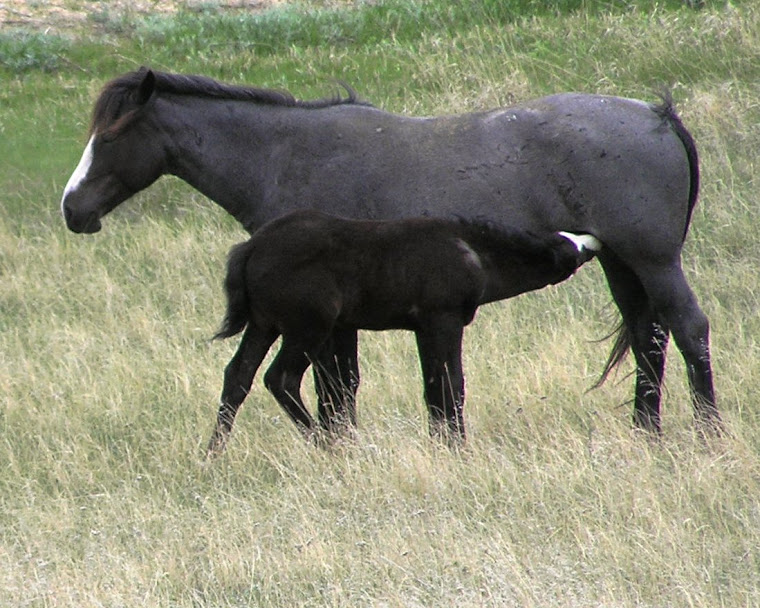

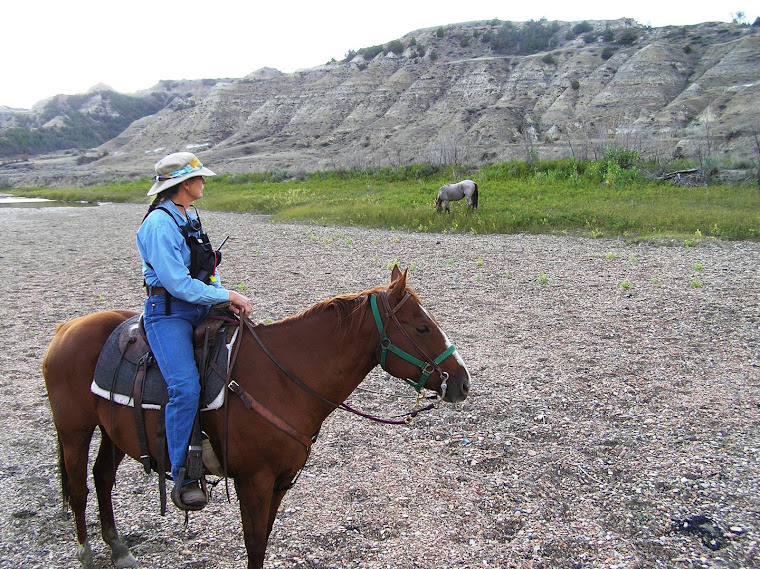
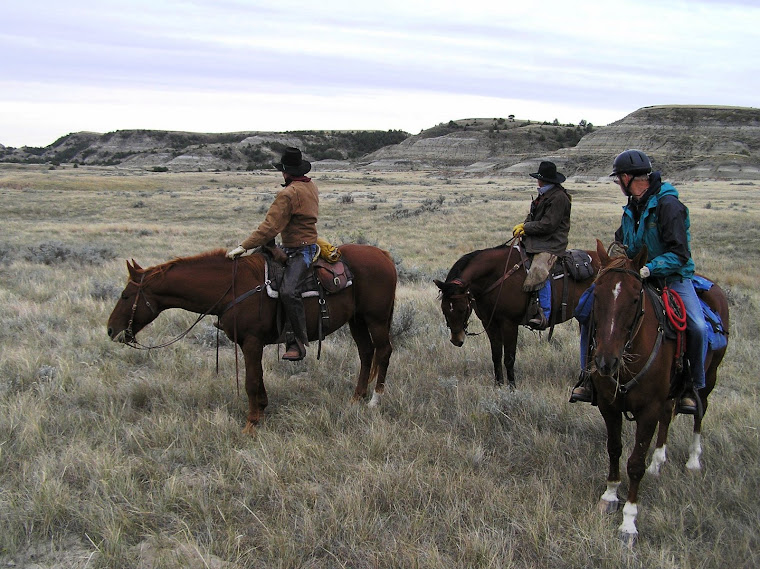
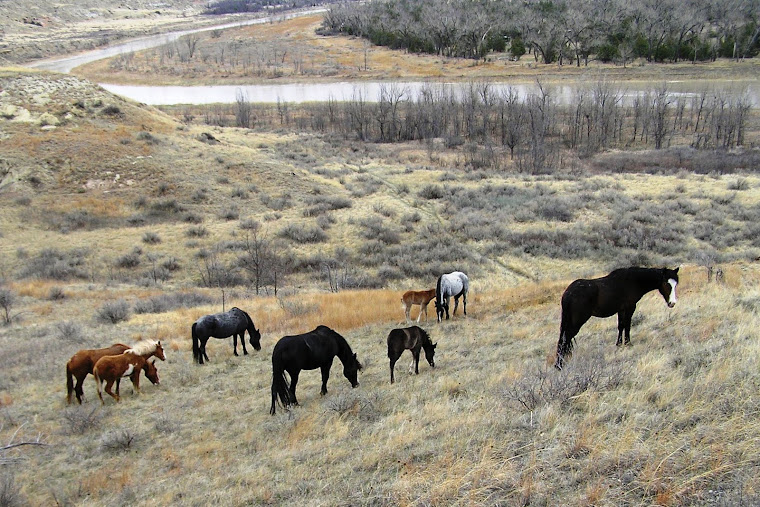
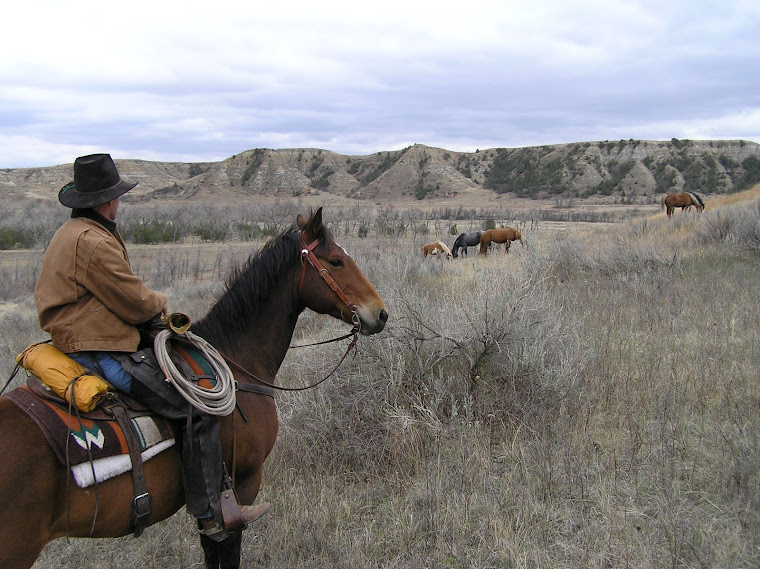

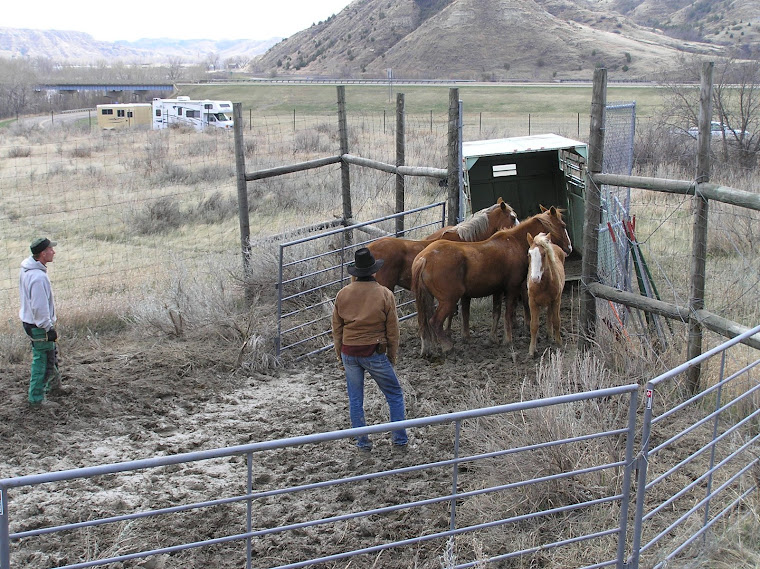
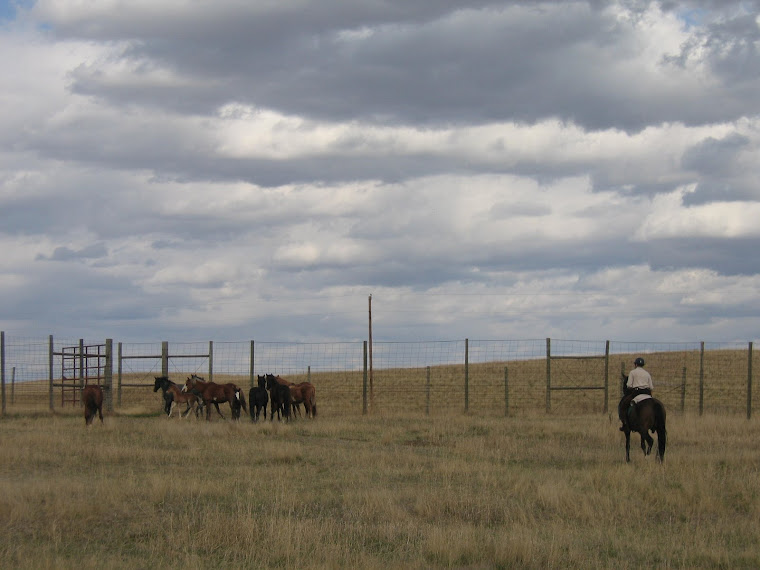
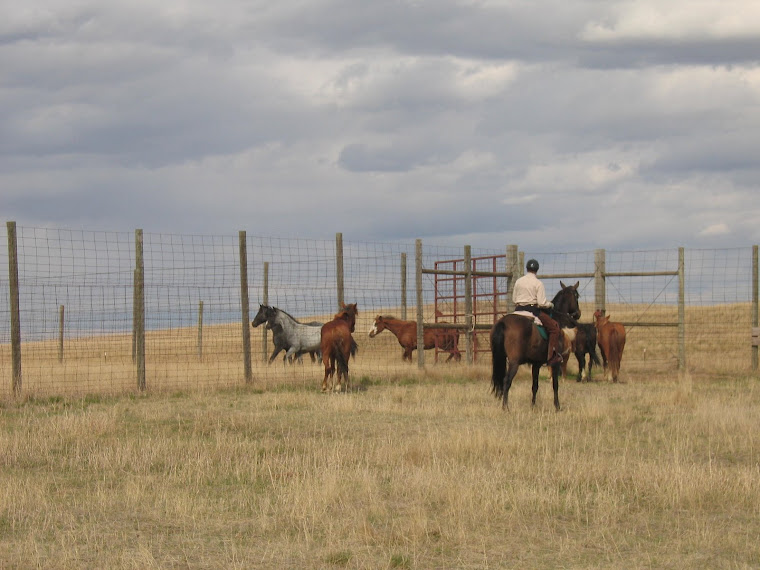
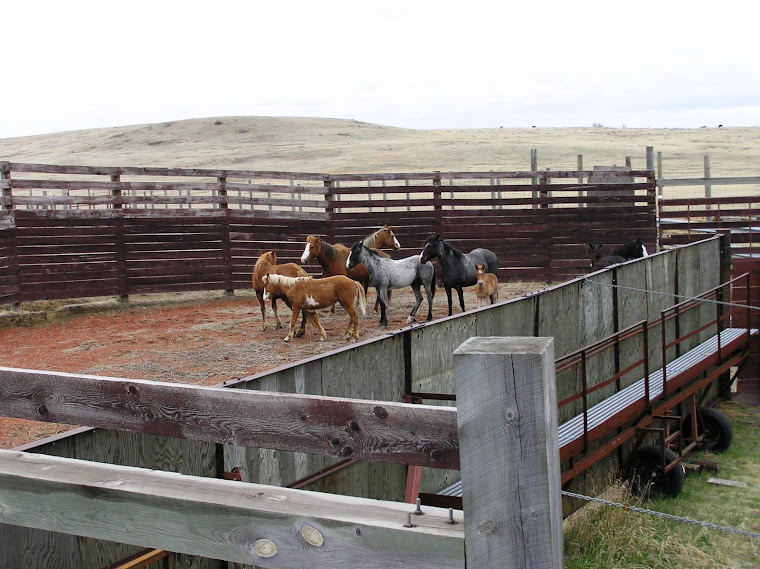


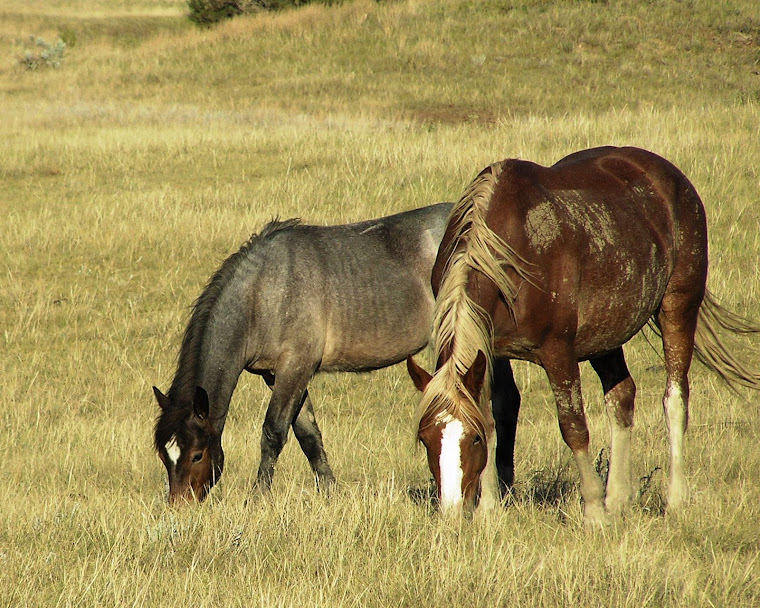

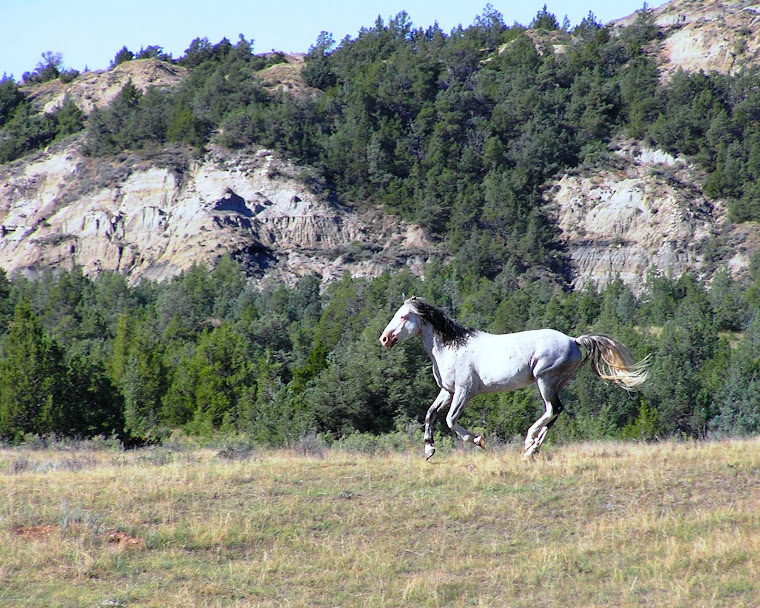
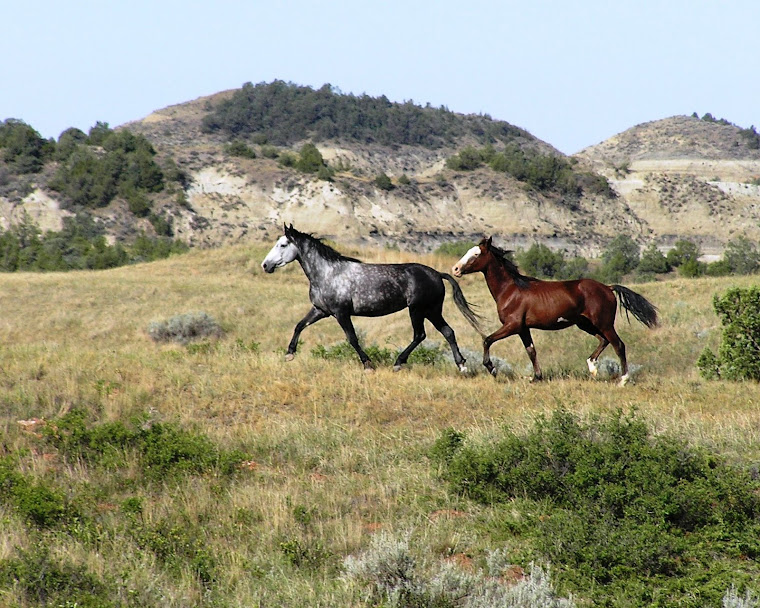
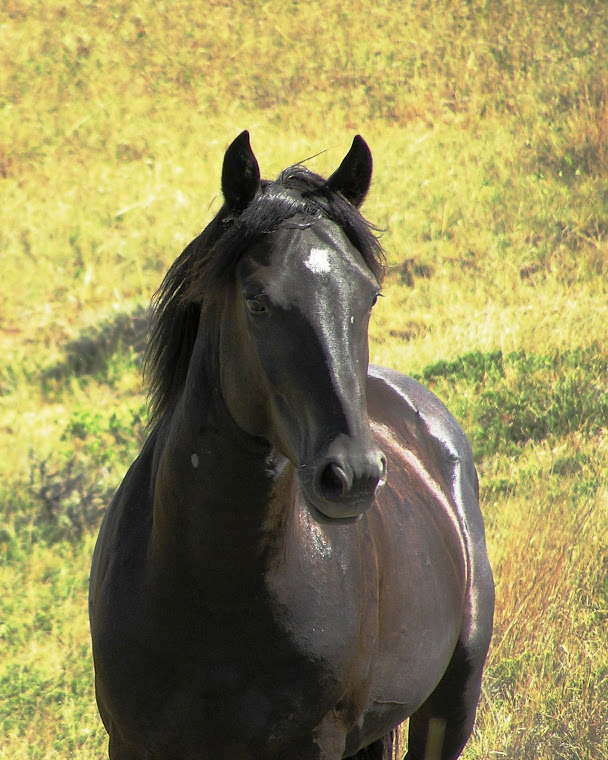

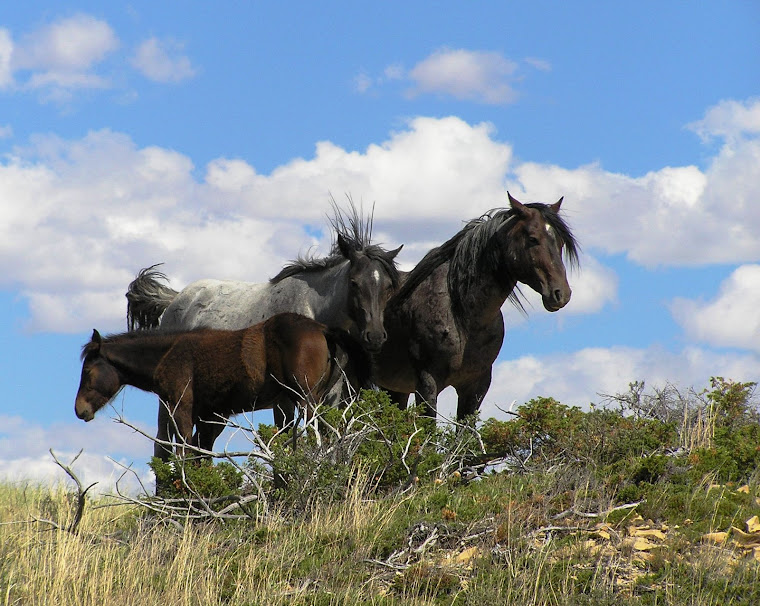



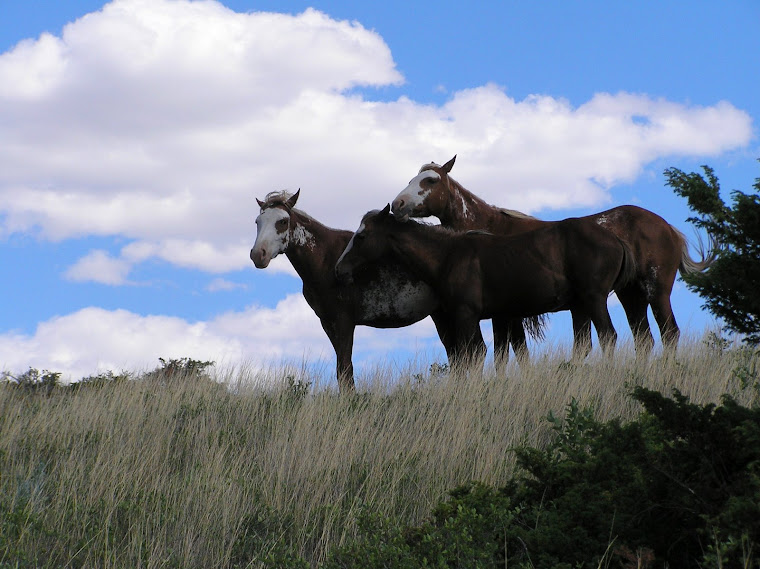


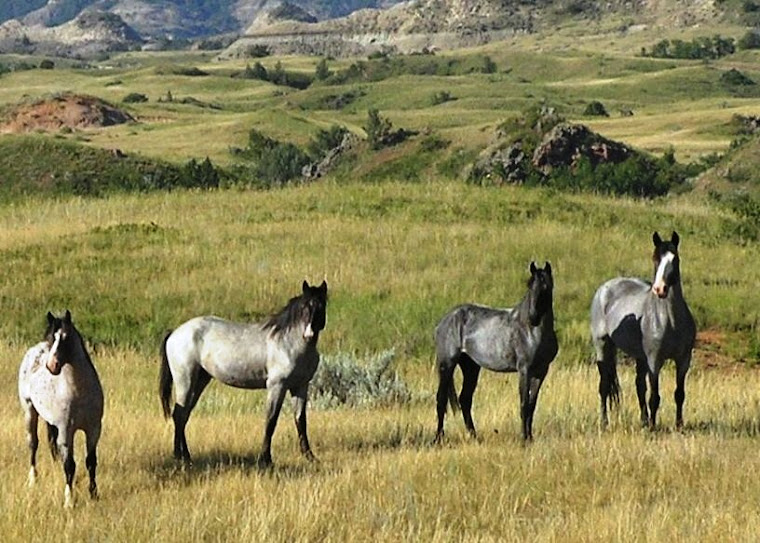
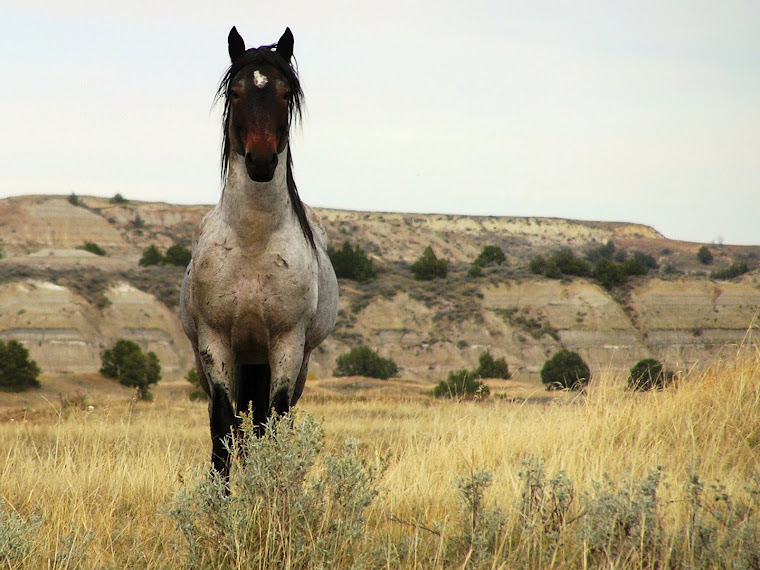
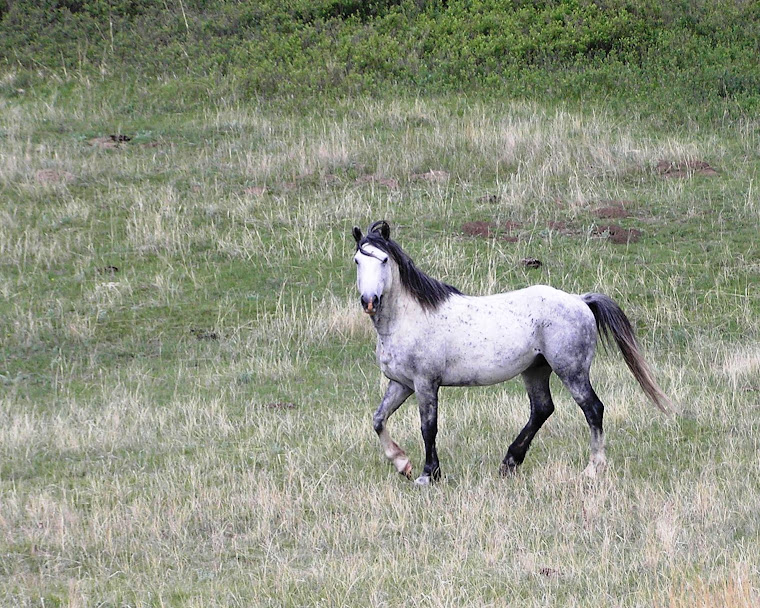

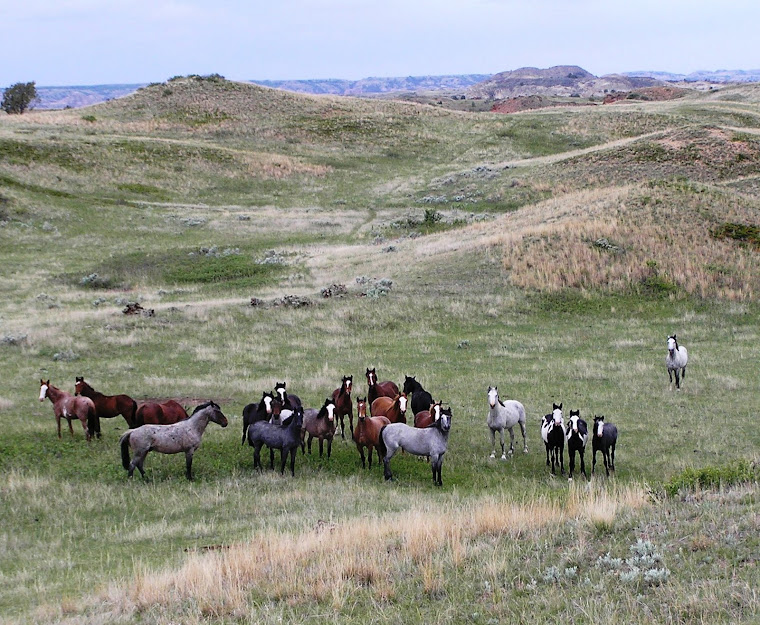
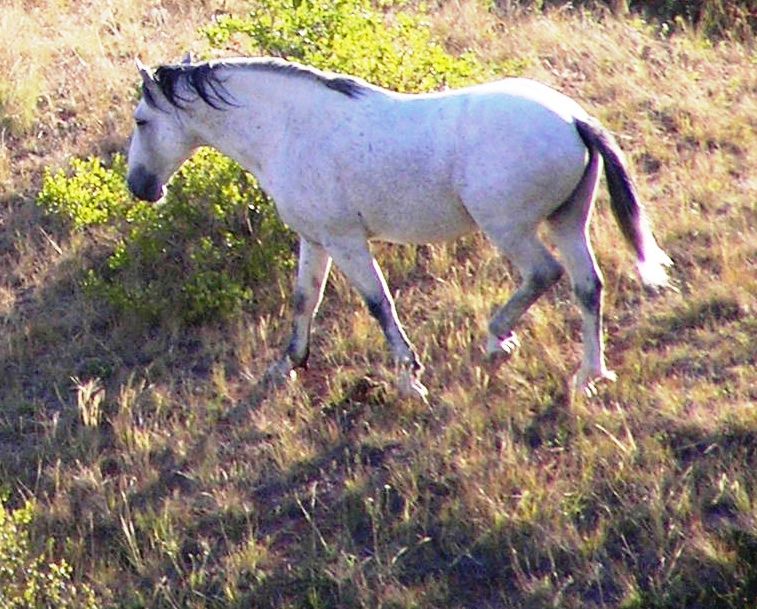
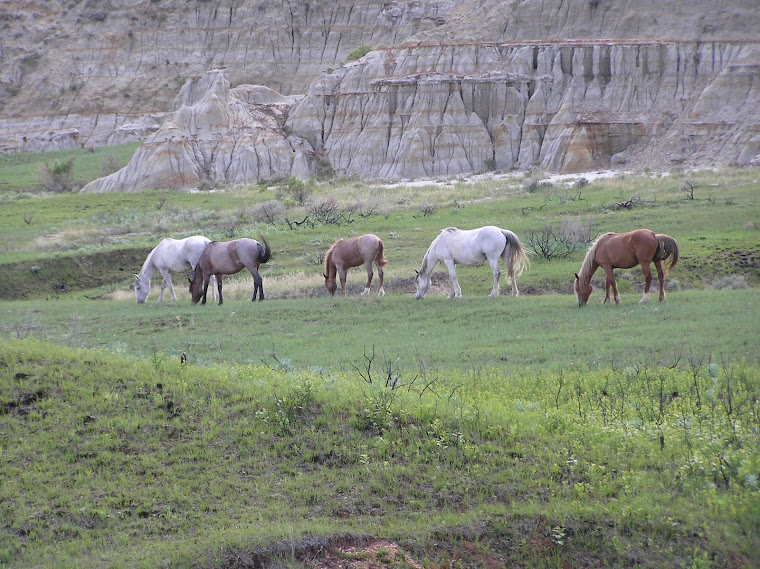
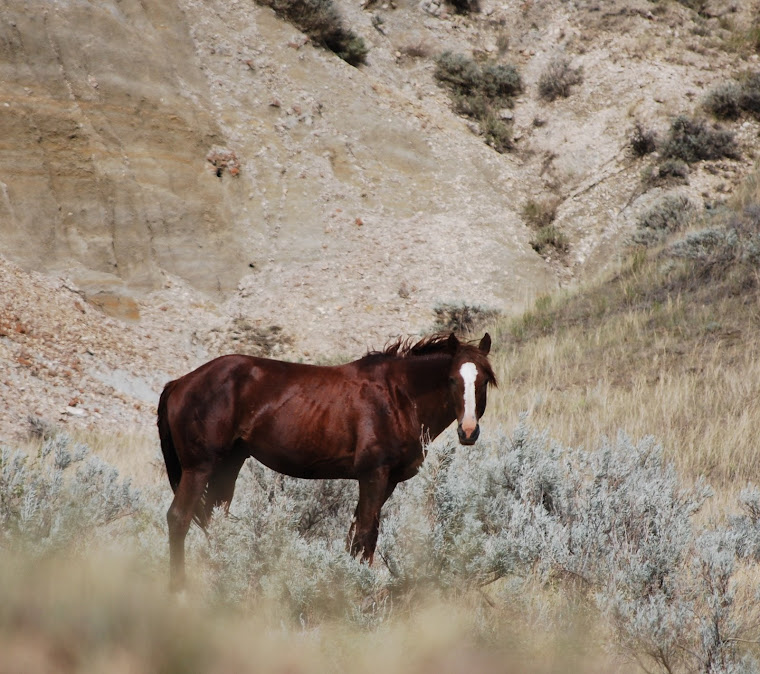

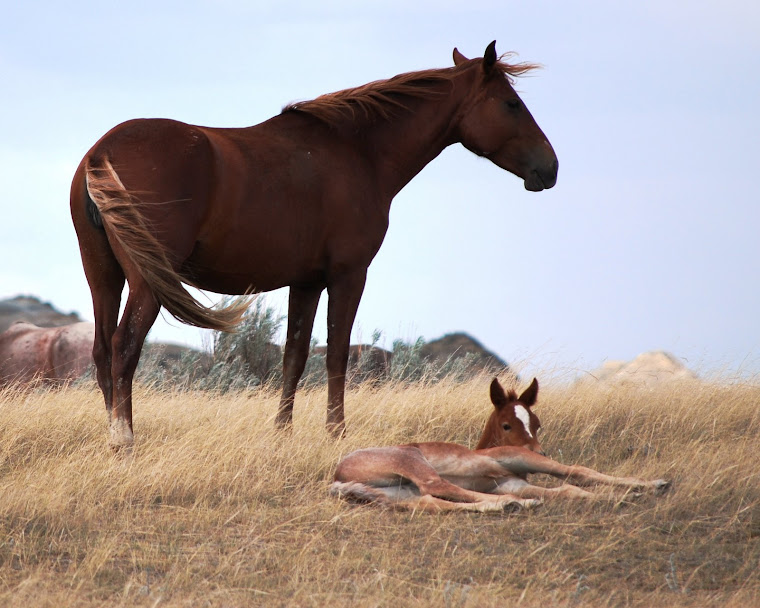
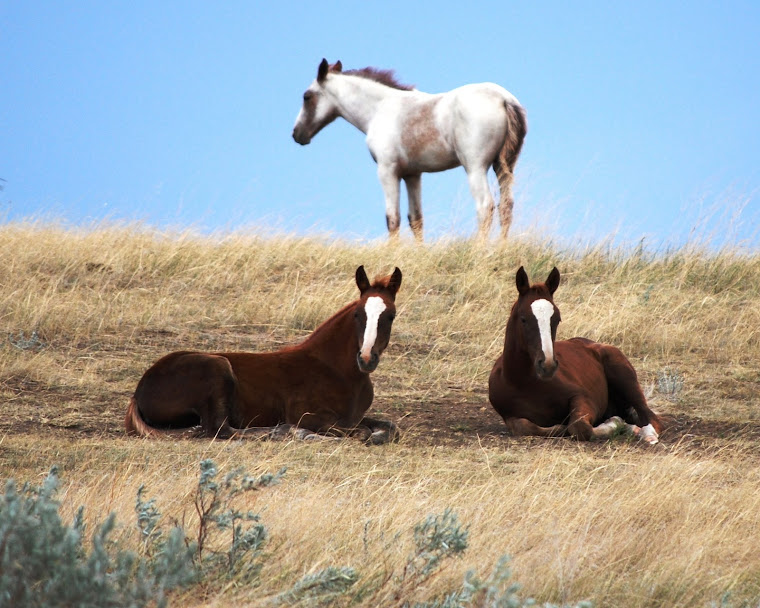
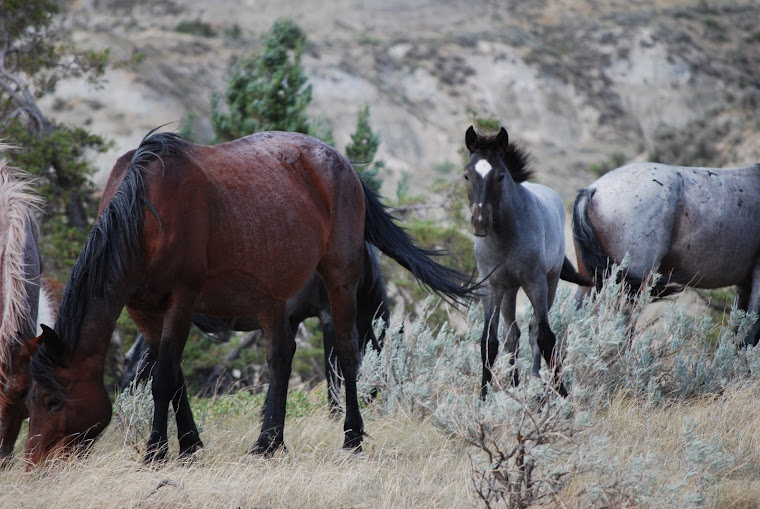

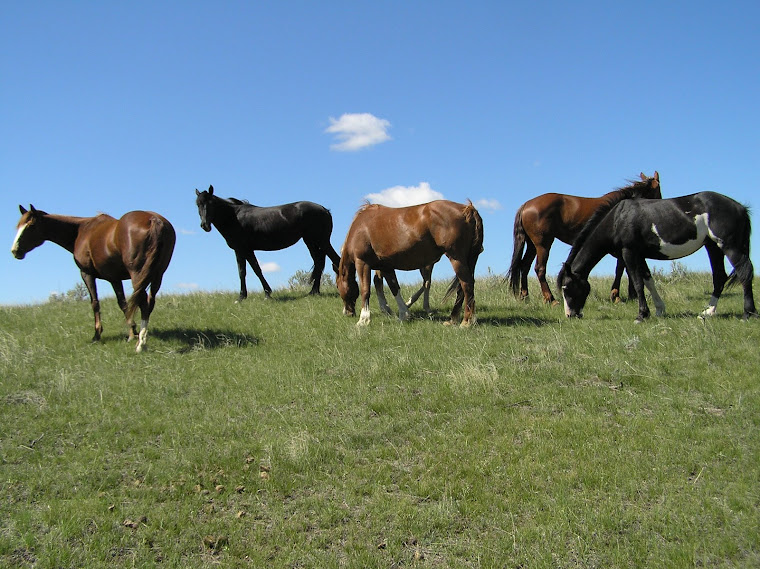
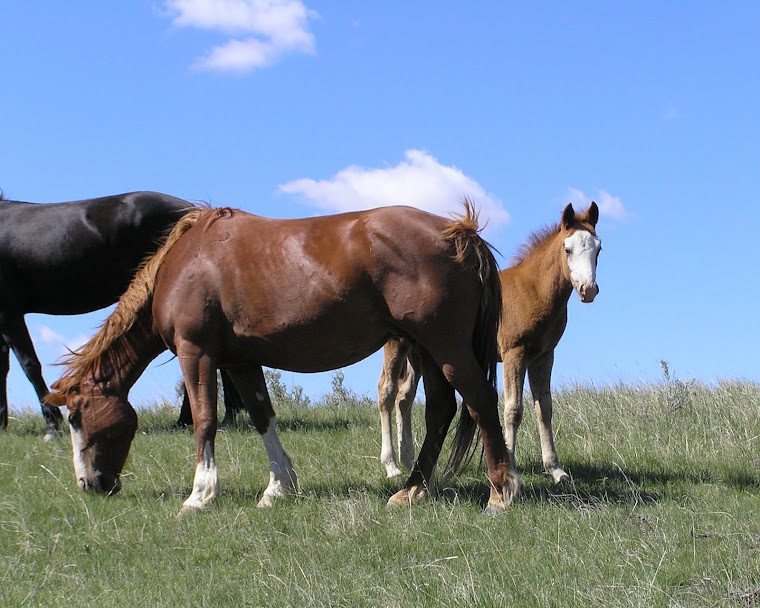

No comments:
Post a Comment